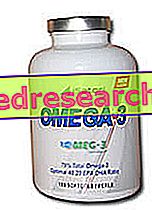
What is Temozolomide Sandoz?
Temozolomide Sandoz is a medicine that contains the active substance temozolomide. It is available as capsules (white and green: 5 mg; white and yellow: 20 mg; white and pink: 100 mg; white and blue: 140 mg; white and brown: 180 mg; white: 250 mg).
Temozolomide Sandoz is a 'generic medicine', which means that Temozolomide Sandoz is similar to a 'reference medicine' already authorized in the European Union (EU) called Temodal.
What is Temozolomide Sandoz used for?
Temozolomide Sandoz is an anticancer medicine. It is indicated for the treatment of malignant gliomas (brain tumors) in the following groups of patients:
adults who have recently been diagnosed with glioblastoma multiforme (a particularly aggressive type of brain tumor). Temozolomide Hospira is used first with radiotherapy, then alone;
adults and children from three years of age with a malignant glioma such as glioblastoma multiforme or anaplastic astrocytoma, when the tumor has reappeared or worsened after a standard treatment. In these patients Temozolomide Hospira is used alone.
The medicine can only be obtained with a prescription.
How is Temozolomide Sandoz used?
Treatment with Temozolomide Sandoz should be prescribed by a doctor experienced in the treatment of brain tumors.
The dosage of Temozolomide Sandoz, administered once a day, depends on the body surface (calculated using the height and weight of the patient) and ranges from 75 to 200 mg per square meter once a day. The dosage and the number of doses depend on the type of tumor to be treated, on the possibility that the patient has been treated previously, on the fact that Temozolomide Sandoz is used alone or with other therapies and from the patient's response to treatment. Temozolomide Sandoz should be taken with food.
Patients may also need a medication to prevent vomiting prior to administration of Temozolomide Sandoz. Temozolomide Sandoz should be used with caution in patients with severe liver or kidney problems.
For complete information, see the summary of product characteristics (also included in the EPAR).
How does Temozolomide Sandoz work?
The active substance in Temozolomide Sandoz, temozolomide, belongs to a group of anticancer medicines called alkylating agents. In the body, temozolomide is converted into another compound called MTIC. MTIC binds to cell DNA during the reproductive phase, thereby blocking cell division. As a result, tumor cells cannot reproduce and tumor growth is slowed.
How has Temozolomide Sandoz been studied?
Because Temozolomide Sandoz is a generic medicine, studies have been limited to tests to show that it is bioequivalent to the reference medicine, Temodal. Two medicines are bioequivalent when they produce the same levels of active ingredient in the body.
What are the benefits and risks of Temozolomide Sandoz?
Because Temozolomide Sandoz is a generic medicine and is bioequivalent to the reference medicine, its benefits and risks are taken as being the same as the reference medicine's.
Why has Temozolomide Sandoz been approved?
The Committee for Medicinal Products for Human Use (CHMP) concluded that, based on the requirements of EU legislation, Temozolomide Sandoz has been shown to have comparable quality and to be bioequivalent to Temodal. Therefore, it is the CHMP's view that, as in the case of Temodal, the benefits outweigh the identified risks. The Committee therefore recommended that Temozolomide Sandoz be given marketing authorization.
More information on Temozolomide Sandoz
On March 15, 2010, the European Commission granted Tandozolomide Sandoz a marketing authorization valid throughout the European Union to Sandoz Pharmaceutical GmbH. The marketing authorization is valid for five years and can be renewed after this period.
The full EPAR for Temozolomide Sandoz can be found here. For more information about treatment with Temozolomide Sandoz, read the package leaflet (also part of the EPAR).
The full EPAR of the reference medicine is also found on the Agency's website.
Last update of this summary: 01/2010.



